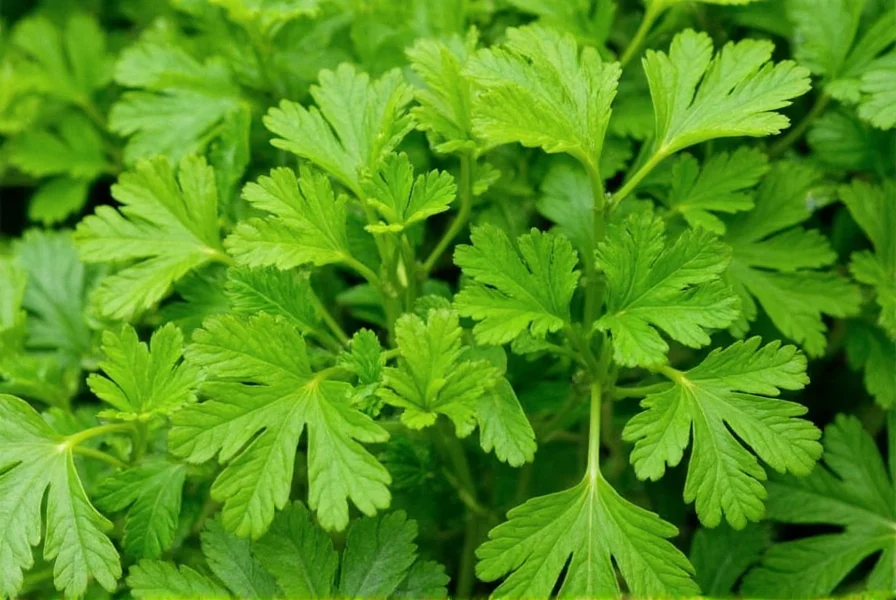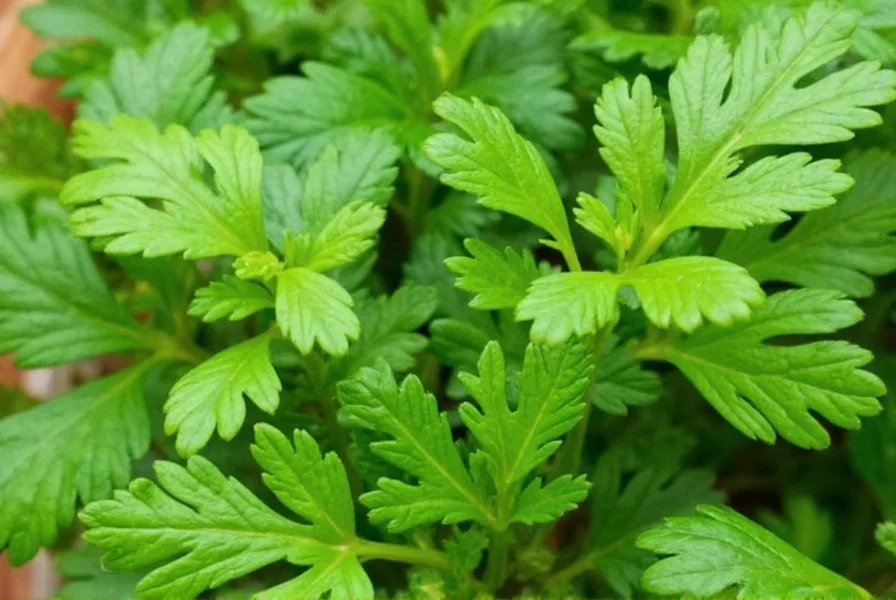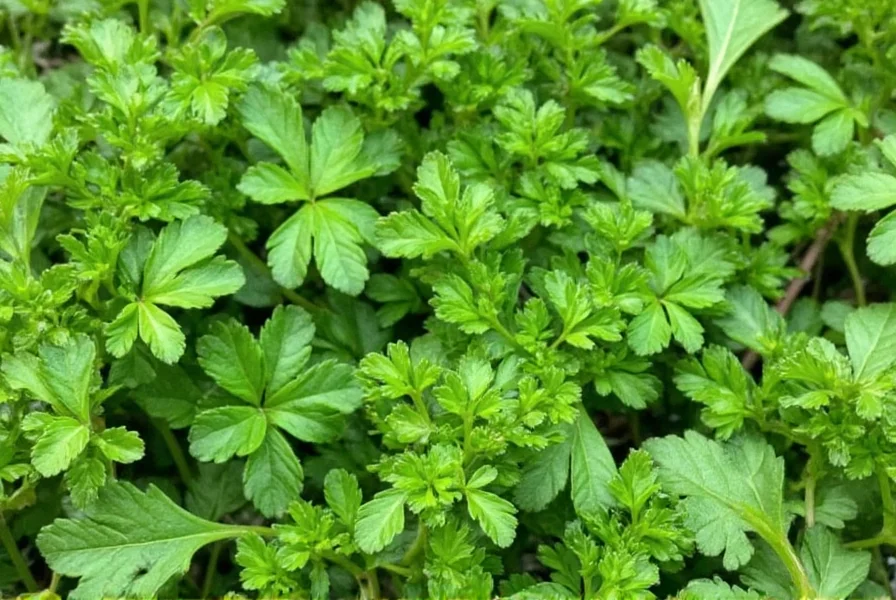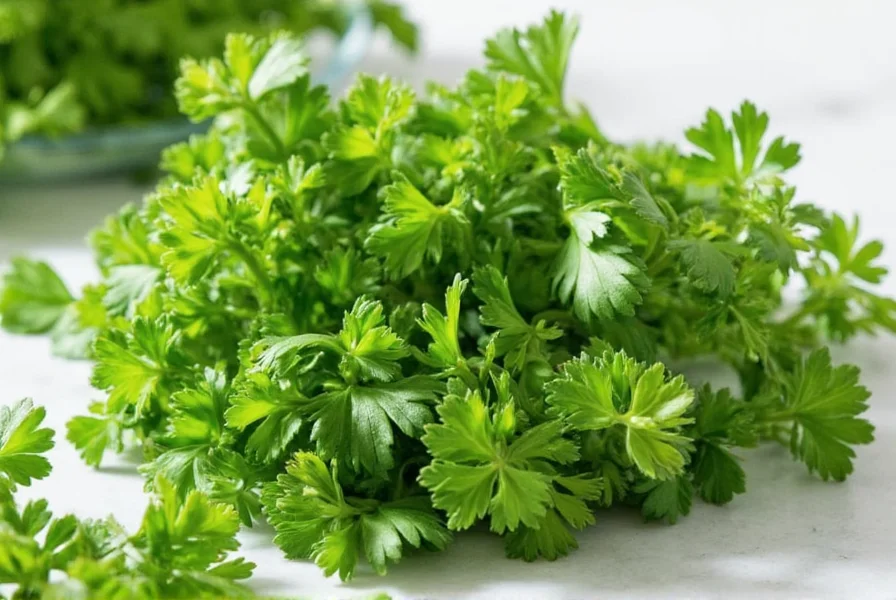Table of Contents
Introduction
The standard conversion ratio for fresh to dried parsley is 1 tablespoon fresh = 1 teaspoon dried (a 3:1 ratio). This means you should use one-third the amount of dried parsley compared to fresh when substituting in recipes. Whether you're cooking a soup, salad, or sauce, understanding this ratio ensures perfect seasoning every time.
Why Parsley Matters
Parsley is more than just a garnish. It's a powerhouse of flavor and nutrition. Rich in vitamins A, C, and K, as well as antioxidants, parsley adds a bright, slightly peppery taste that complements everything from soups and salads to stews and sauces.
But here's the catch: fresh parsley has a much more vibrant and nuanced flavor compared to its dried counterpart. Dried parsley tends to be more concentrated, which means using too much can result in an overpowering taste. That's why understanding the fresh to dried parsley equivalent is key to maintaining balance in your cooking.
Fresh vs. Dried Parsley: The Big Difference
Before we get into the nitty-gritty of substitution, let's take a closer look at what sets fresh and dried parsley apart:
- Flavor: Fresh parsley has a brighter, more aromatic profile, while dried parsley is more earthy and concentrated.
- Texture: Fresh parsley is crisp and juicy, whereas dried parsley is brittle and powdery.
- Usage: Fresh parsley is best used raw or added at the end of cooking, while dried parsley can withstand longer cooking times.
So if you're using dried parsley in place of fresh, you'll need to adjust the amount accordingly. This brings us to the all-important question: what is the fresh to dried parsley equivalent?

Fresh to Dried Parsley Equivalent: The Magic Ratio
The general rule of thumb is that 1 tablespoon of fresh parsley equals about 1 teaspoon of dried parsley. But this isn't a hard and fast rule—it depends on the recipe, the type of parsley (curly vs. flat-leaf), and how strong you want the flavor to be.
| Fresh Parsley | Dried Parsley |
|---|---|
| 1 tablespoon | 1 teaspoon |
| 2 tablespoons | 2 teaspoons |
| 1/4 cup | 1 tablespoon + 1 teaspoon |
| 1/2 cup | 2 tablespoons + 1 teaspoon |
| 1 cup | 3 tablespoons + 1 teaspoon |
This ratio works well for most recipes, but always keep in mind that dried herbs are more potent. If you're unsure, start with less and add more to taste.
Practical Tips for Using Parsley
Now that you understand the basics, here are some practical tips to help you use both fresh and dried parsley like a pro:
- Use fresh parsley for garnish: Its bright color and fresh aroma make it perfect for finishing dishes like salads, soups, and roasted vegetables.
- Store fresh parsley properly: Wrap it in a damp paper towel and store it in the fridge for up to a week. Alternatively, you can freeze it in airtight containers.
- Toast dried parsley before using: This helps release its oils and enhance its flavor, especially in baked goods or slow-cooked dishes.
- Make your own dried parsley: Simply spread fresh parsley leaves on a baking sheet and dry them in a low oven (around 150°F) for several hours until they become brittle.
- Don't overdo it with dried parsley: Because it's more concentrated, using too much can quickly overpower a dish.
By following these tips, you can ensure that your dishes always have the right amount of parsley, whether you're working with fresh or dried.
Buying Guide: How to Choose the Best Parsley
If you're looking to buy parsley—whether fresh or dried—there are a few key factors to consider. Here's a quick buying guide to help you choose the best option for your needs:
Buying Fresh Parsley
- Look for vibrant green leaves: Avoid parsley with yellowing or wilted leaves, as this indicates it's past its prime.
- Check the stems: They should be firm and not limp or soggy.
- Smell it: Fresh parsley should have a strong, pleasant aroma.
Buying Dried Parsley
- Choose high-quality brands: Look for products that are finely ground and free from additives or fillers.
- Check the expiration date: Dried herbs lose potency over time, so make sure the package is still fresh.
- Consider organic options: Organic dried parsley is often more flavorful and free from harmful chemicals.
Some popular brands include:
- Better Than Bouillon Parsley: Known for its strong flavor and versatility.
- Marzetti Dried Parsley: A great choice for everyday cooking and baking.
- McCormick Dried Parsley: A trusted name in spice and herb products.
Each of these brands has its own unique qualities, so experiment to find the one that suits your taste best.

Frequently Asked Questions
What is the exact fresh to dried parsley conversion ratio?
The standard conversion ratio is 3 parts fresh parsley to 1 part dried parsley. Specifically, 1 tablespoon of fresh parsley equals approximately 1 teaspoon of dried parsley. This 3:1 ratio exists because the drying process concentrates the herb's flavor compounds while removing water content. According to culinary experts, this ratio ensures optimal flavor balance in any recipe.
Can I substitute dried parsley for fresh in all recipes?
While you can substitute dried for fresh in most cooked dishes, it's not recommended for raw applications like salads or fresh salsas. Dried parsley lacks the bright, crisp texture of fresh and works best in soups, stews, sauces, and baked dishes where it has time to rehydrate and release its flavors during cooking. Professional chefs recommend using fresh parsley for garnishes to preserve color and texture.
Why does dried parsley taste different from fresh?
Drying changes parsley's chemical composition. Fresh parsley contains volatile oils that provide its bright, grassy flavor, which partially evaporate during drying. The result is a more earthy, concentrated flavor profile in dried parsley. Additionally, the texture changes completely - from crisp and juicy to brittle and powdery. The drying process also affects the herb's chlorophyll, which is why dried parsley often has a duller green color compared to the vibrant hue of fresh parsley.
How should I adjust recipes when substituting dried for fresh parsley?
When substituting dried for fresh, use one-third the amount of dried parsley. For example, if a recipe calls for 3 tablespoons fresh parsley, use 1 tablespoon dried. Always add dried parsley earlier in the cooking process to allow time for rehydration (about 15-20 minutes before the dish is finished), while fresh parsley should be added in the last few minutes or as a garnish to preserve its bright flavor and color. For delicate dishes, consider using half the standard conversion to avoid overpowering other flavors.
Does the type of parsley affect the conversion ratio?
The basic 3:1 conversion ratio applies to both curly and flat-leaf (Italian) parsley. However, flat-leaf parsley generally has a stronger flavor, so you might use slightly less dried flat-leaf parsley than curly variety when substituting. For precise control, start with less and adjust to taste based on the specific variety you're using. If you're making your own dried parsley, flat-leaf varieties typically yield better flavor retention after drying compared to curly parsley.
How long does dried parsley retain its flavor?
Properly stored dried parsley maintains good flavor for 1-2 years. Store it in an airtight container away from heat, light, and moisture. To test if your dried parsley is still potent, rub a small amount between your fingers and smell it - if the aroma is weak, it's time to replace it. Fresh parsley's flavor degrades much faster, typically within a week when refrigerated. For best results, use dried parsley within 6 months of opening the container, and always keep it away from strong-smelling spices that could affect its flavor.
Can I make my own dried parsley at home?
Yes, making your own dried parsley is simple and preserves more flavor than store-bought options. Wash fresh parsley, pat dry, and remove leaves from stems. Spread leaves in a single layer on a baking sheet and dry in an oven at the lowest setting (around 150°F or 65°C) for 2-3 hours until brittle. Alternatively, hang small bundles upside down in a warm, dry, dark place for 1-2 weeks. Store the completely dried leaves in an airtight container away from light. For even better flavor retention, consider using a food dehydrator at 95°F (35°C) for 4-6 hours.
What happens if I use too much dried parsley?
Using too much dried parsley can make your dish taste overly bitter, earthy, or medicinal. Since dried parsley is more concentrated, exceeding the recommended amounts can overwhelm other flavors. If you accidentally add too much, try balancing with acid (lemon juice or vinegar), sweetness (a pinch of sugar), or additional liquid to dilute the strong flavor. For future reference, remember that dried herbs are typically 2-3 times more potent than fresh, so always err on the side of caution when substituting.
Conclusion
Understanding the fresh to dried parsley equivalent is essential for anyone who wants to use this herb effectively in their cooking. Whether you're working with fresh or dried parsley, knowing how to substitute one for the other will save you from disappointment and ensure your dishes are always perfectly seasoned.
Remember, fresh parsley offers a more vibrant and complex flavor, while dried parsley is convenient and long-lasting. By following the guidelines in this article, including the proper conversion ratios and usage tips, you'll be able to make the most of both forms and take your culinary skills to the next level.












 浙公网安备
33010002000092号
浙公网安备
33010002000092号 浙B2-20120091-4
浙B2-20120091-4